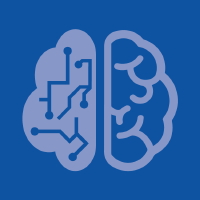Topic Menu
► Topic MenuTopic Editors

New Advances in Granular Computing and Data Mining
Topic Information
Dear Colleagues,
Data mining has actively contributed to solving many real-world problems with a variety of techniques. During the last few years, several challenges have emerged, such as the occurrence of imbalanced data, multi-label and multi-instance problems, low quality, and noisy data. Granular computing provides a powerful tool for multiple granularity and multiple-view data analysis at different granularity levels, which has demonstrated strong capabilities and advantages in intelligent data analysis, pattern recognition, machine learning and uncertain reasoning. Based on granular computing, many new methods have been developed in order to solve the problem of big data analytics and mining. This Special Issue provides a platform for researchers to present their novel and unpublished works in the domain of granular computing and data mining. We are pleased to invite you, along with the members of your research group, to contribute to the forthcoming MDPI Special Issue, entitled “New Advances in Granular Computing and Data mining”. Potential topics include, but are not limited to, the following:
- Rough set-based data mining;
- Fuzzy set-based data mining;
- Knowledge-based granular data mining;
- Knowledge-based three-way data analytics;
- Machine learning;
- Three-way decision;
- Three-way clustering;
- Uncertainty analysis;
- Cognitive computing;
- Features selection.
Prof. Dr. Xibei Yang
Prof. Dr. Bin Xie
Dr. Pingxin Wang
Dr. Hengrong Ju
Topic Editors
Keywords
- granular computing
- data mining
- knowledge discovery
- knowledge discovery
- uncertainty analysis
- fuzzy set
Participating Journals
| Journal Name | Impact Factor | CiteScore | Launched Year | First Decision (median) | APC |
|---|---|---|---|---|---|

Big Data and Cognitive Computing
|
3.7 | 7.1 | 2017 | 25.3 Days | CHF 1800 |

Entropy
|
2.1 | 4.9 | 1999 | 22.3 Days | CHF 2600 |

Information
|
2.4 | 6.9 | 2010 | 16.4 Days | CHF 1600 |

Mathematical and Computational Applications
|
1.9 | - | 1996 | 25.4 Days | CHF 1400 |

Mathematics
|
2.3 | 4.0 | 2013 | 18.3 Days | CHF 2600 |

Preprints.org is a multidisciplinary platform offering a preprint service designed to facilitate the early sharing of your research. It supports and empowers your research journey from the very beginning.
MDPI Topics is collaborating with Preprints.org and has established a direct connection between MDPI journals and the platform. Authors are encouraged to take advantage of this opportunity by posting their preprints at Preprints.org prior to publication:
- Share your research immediately: disseminate your ideas prior to publication and establish priority for your work.
- Safeguard your intellectual contribution: Protect your ideas with a time-stamped preprint that serves as proof of your research timeline.
- Boost visibility and impact: Increase the reach and influence of your research by making it accessible to a global audience.
- Gain early feedback: Receive valuable input and insights from peers before submitting to a journal.
- Ensure broad indexing: Web of Science (Preprint Citation Index), Google Scholar, Crossref, SHARE, PrePubMed, Scilit and Europe PMC.




